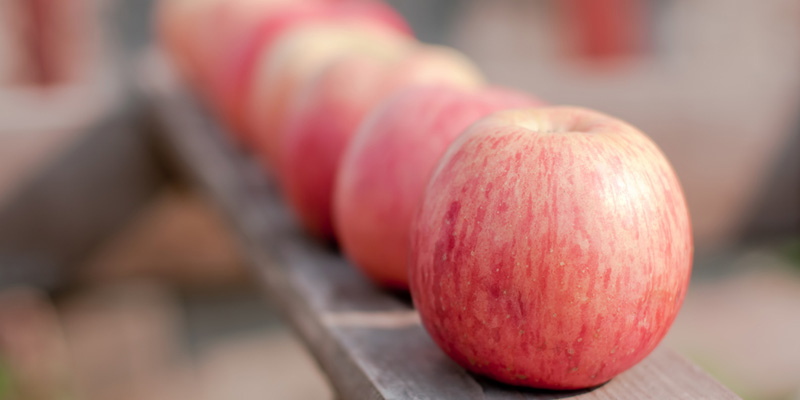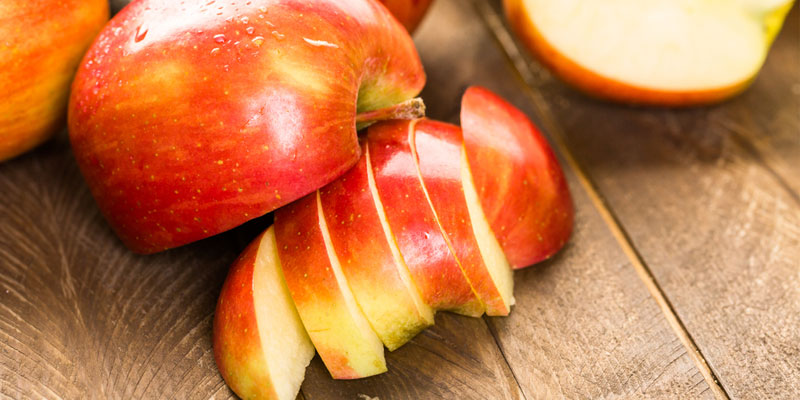Better Websites to own 2025
Jun 11, 2025

Fuji apples are known for their distinct sweet taste and crisp texture. They keep well for several months, especially when it’s cold, which is typically around their peak season. That is, depending on where you are. But once summer comes, they lose their crips texture when stored in room temperature. They also ripen fast, producing ethylene gas that makes the apples ripen faster. If you don’t have room in your fridge, then here’s how to freeze dry fuji apples to give your fruit a longer shelf life in your pantry.
The best fuji apples are the ones that are ripe and juicy. It should be red in color with occasional streaks of apple-green. The texture should be firm and smooth.
Choose the same sizes of fruit as much as possible. This will help keep the freeze-drying rate uniform. Then, when you get them, put them away from other fruits in separate containers or bags.
Don’t go for the soft ones that have brown spots because this means the fruit is spoiled. Check for insects and wormholes, either. This is a must whether you’re freeze-drying for your family or for commercial uses. Damaged apples compromise the quality of your
Wash your batch of fuji apples well under running water to remove any dirt and debris they’ve been exposed to.
If unsure where the apples were harvested, soak them in a baking soda bath. Prepare 1 part baking soda to 2 parts of water (ex: 1 cup baking soda, 2 cups of water) and let the apples soak for 15 minutes. Then rinse thoroughly under running water to remove the solution from the skin.
We highly recommend you do a peeled batch and another with the skins on. The peeled fuji apples are good for pie fillings, scones, and muffins. In addition, the ones with the skins on are good to use for trail mix, cereals, and cakes.

There are different ways to core Fuji apples. The simplest one is to slice the apple in quarters and trim the core. The other is to use an apple corer, but it can take out a chunk of flesh. Also, you must see the status of the core before you freeze dry. Sometimes you’ll see a fuzzy white tissue in the core. This can be either dry core rot or callus tissue.
Fuji apples are prone to moldy core or dry core rot, which happens mostly during transportation. Unless it’s in the late stage, you’ll only see it when you slice the apple in half. This makes the apple unsafe to eat and process. On the other hand, callus tissue results from an injury or wound in the apple. The core produces this thick, corky tissue to protect the wound, much like how your body produces scar tissue after an injury. In essence, a moldy core is caused by a fungus, and callus tissue results from an injury. So an apple with callus tissue is safe to eat. But if you can’t differentiate between moldy core and callus tissue, err on the safe side, and don’t freeze-dry that apple if you find either white substance.
You can slice the apples in the shape you want. For example, Half-moon slices are great for crisp apple chips. Cubes are also good if you want to use your freeze-dried Fuji apple for sauces and fillings. The more surface area you have, the faster and more efficient the freeze drying.
Just remember to keep the thickness to a maximum of 3/4 inch. Thick slices often take longer, if not fail, during the freeze-drying process. If you want chunks of fruit, a minimum of 1/2 inch thickness is ideal.
Some experience browning of their apples during freeze-drying. To prevent this, you can go two ways:
Mix equal amounts of ascorbic acid and citric acid in a bowl. Mix it well, then dissolve a tablespoon of the mix into 3 quarts or 12 cups of water. This is just an estimate if you want to use this combination.
But if you want to use ascorbic or citric acid individually, the ratio will be different. For example, use 1 tablespoon of ascorbic acid for every 2 cups of water and thoroughly soak the prepared fruit for 3-5 minutes. Alternatively, you can use 1 tablespoon of citric acid to 1 gallon of cold water, then soak your prepared fruit for 15 minutes.
Prepare a citrus bath with a ratio of 1 tablespoon of lemon juice to 1 cup of water. Let your sliced Fuji apples soak for 3-5 minutes.
Yes, this will put a slight tang on your fruit. However, there are other methods to use, so feel free to experiment to see which one will be okay for freeze-drying Fuji Apples.

Some always pre-freeze their food before freeze-drying, and some don’t. So feel free to freeze your apples if you’ve got space in your deep freezer. This helps lessen the freeze-dryer load and shortens the freeze-drying time.
When you’ve got a Harvest Right freeze dryer, freeze-drying Fuji Apples is so easy.
On average, it takes about 29-32 hours to freeze dry Fuji apples. This can depend on several conditions, like the temperature and humidity of the room where you installed your freeze dryer.
A freeze-dried Fuji apple slice should be light, airy, and crunchy. For the cubed or thick slices, break apart or eat a few random pieces. If any apples feel cool, soft, and even a tad moist, put the trays back for 2-4 hours of extra dry time.
These will last you 25 or more years when properly freeze-dried and stored. Mason jars are ideal when you want freeze-dried Fuji Apples every now and then. They’re easy to open and reseal, and they’re reusable. Mylar Bags are excellent for long-term storage or if you plan to take your freeze-dried fruit with you on camping and hiking trips.
Just make sure to use oxygen absorbers to prevent browning and food wastage. About 1-2 pieces of 300cc packs are suitable for every gallon-size container. Remember to replace the OAs whenever you open your containers.
Also, the best place to keep your freeze-dried fruit is in a cool, dark, draft-free room. The room temperature should be below 72°F (22 °C), with a relative humidity level of 15% or less.
If you’re unsure where to buy Fuji apples for freeze-drying, always go for the safe side. A reputable grower or a farmer’s market are excellent sources because the apples are almost always fresh and of good quality. Go for the best ones, and you’ll also get the best freeze-dried Fuji apples in your food storage.
Where do you usually get your Fuji apples, and how do you store them? Let us know in the comment section.
For more freeze-drying tips, please subscribe to our YouTube Channel.